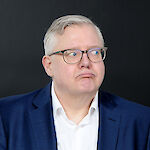
THE SUPREME DISCIPLINE: THE QUALITATIVE-QUANTITATIVE APPROACH IN MARKET RESEARCH
Pretests are predominantly being used in many market research institutions in different forms as part of regular commercial activities. As a purely quantitative online survey, the classic concept, package or product test can have a variety of characteristics, starting with the fundamental test design and the choices between monadic or sequential-monadic approaches, between stand-alone and a realistic shelf environment, between a simple frequency count and a complete shelf conjoint; between tests with or without implicit procedure, just to name a few. The optimal solutions are just as diverse as the questions and can vary a lot depending on the phase of the life cycle of the product.
If we take a glance at the number of pretests that are carried out, under time pressure, we predominantly find quantitative solutions.
Of course, open-ended questions can also be asked in quantitative surveys (and it often makes sense to do so!), be it classic likes and dislikes, chains of associations, or the popular "And can you think of anything else?" at the end of a study. This typically works well for well-known products and markets, for example when carrying out packaging relaunches or range extensions.
However, especially for new and recently developed products, the supreme discipline is still the qualitative-quantitative approach. The same applies for the development of new markets.
Here, a qualitative pre- or follow-up stage can be the decisive factor for the success of the product. Apart from the fact that qualitative research goes far beyond of what we can learn by asking items (and is sometimes it is even a prerequisite for good, meaningful and precise item batteries), it can also uncover completely different insights when it comes to the classic open-ended questions. Only in qualitative research do we have the opportunity for a truly in-depth examination of the complex relationships between consumers and products/brands.
QUALITATIVE RESEARCH AND FAST, AGILE PRETESTING - HOW DOES THAT FIT TOGETHER?
Fortunately, the days are past when qualitative research consisted of hundred-page reports on motivations and needs which were only available after several weeks, and then had to be ‘digested’ – if at all – over a longer period. We have touched this topic in an earlier article.
Qualitative research learned a lot from design thinking and has become more aware of its own core competence of exploring agile research and development possibilities in a new way - Creating real proximity with potential users (of a product) and the translation and transfer of this knowledge into companies and product development.
With this in mind, we have also developed a qualitative approach for the German market, following our experience with kvest, where we carry out quantitative automated pretests within 48h. This approach allows the richness of the qualitative perspective to be harnessed where it makes sense in fast-moving pretest procedures.
THE JOURNEY IS THE DESTINATION: OPTIMIZING MARKET RESEARCH WITH SMART AND AGILE QUALITATIVE PRETESTS
Either the smart qualitative pretest is conducted before the quantification. This makes sense if we need this fast-moving qualitative insight round even before the quantitative pretest (for example, for the right "twist" from the consumer's point of view in the formulation or the item batteries). Because there is not always time for extensive basic research.
Or we have open follow-up questions on the results of a quantitative review (e.g., in the form of dashboards or key charts) before deriving summaries and recommendations. To give a rather simple example: A concept is rated as very relevant but does not seem credible. We want to increase credibility and would like to know the best way to achieve this. With a qualitative module, we can hook into the heart of consumers and develop approaches on how we can ensure credibility for consumers and thus increase the attractiveness of the offer.
It is also possible, and even more time-efficient, to run both modules in parallel: for example, several concepts are subjected to a quantitative pretest, while interviews are conducted in parallel with a part of the samples, or an online community is set up to understand the motivations, drivers and barriers towards the concepts more precisely.
Smart and agile qualitative pretests thus determine: How can I optimize my ideas and concepts? How can basically good (because consumer-convincing) ideas or concepts be pursued despite other weaknesses, and how can barriers be broken down?
Through our in-house EARSandEYES panel, we can ensure the necessary speed of recruitment for Germany in order to get consumers to the table quickly in a fast, agile pretesting process. Either when the right aspects need to be covered in quantitative pretesting, or as soon as quantitative pretesting results are available, when additional depth for further product development or communication is desired in addition to quantitative diagnostics.
How do we make this possible? We recruit directly! After one to two days, the fieldwork can start on the online discussion board or as an online interview. One day after the end of the fieldwork, we deliver the core results in a clear and concise form.
CONCLUSION
The fast-moving, qualitative DeepDive is a perfect addition to the entire portfolio of qualitative and quantitative pretesting. It allows us to get the most out of a pretest even under time constraints and to react flexibly to the need for additional findings after quantitative research. Such a "crisp" additional qualitative approach perfectly complements quantitative pretesting and significantly enriches the results for even better decisions.
Did you like this article?
Get the latest articles delivered straight to your inbox once a month, free of charge.


